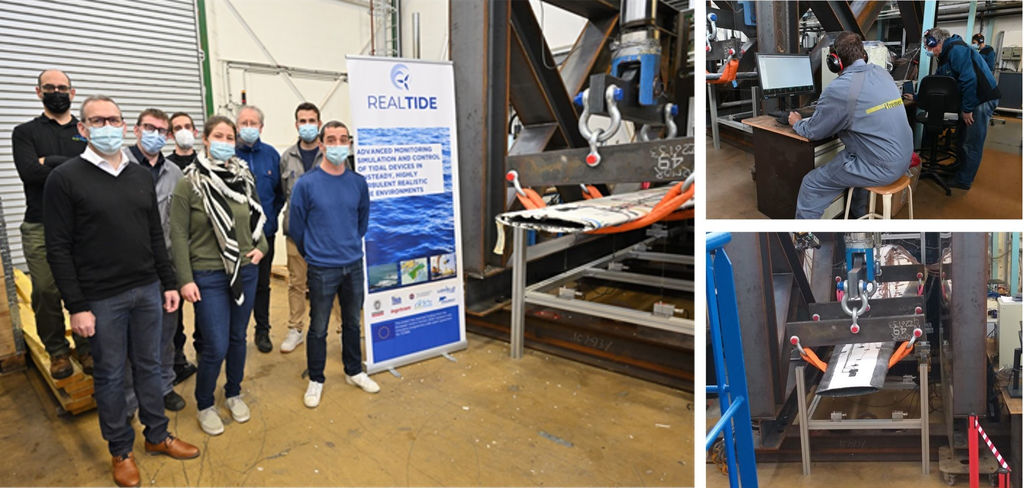French tidal energy company Sabella has performed ‘successful’ tests on the next generation tidal turbine blades as part of the RealTide project.
Sabella has developed and tested a new design of the turbine blade which integrates optimised materials like fiberglass and carbon fiber mix, which allows a reduction in manufacturing costs by 10% while increasing the breaking load by 35%, the company said.
Analysis of the tests carried out on a first prototype blade in early 2021 had made it possible to determine the sequence of damage that led to the failure.
To remind, the five-metre-long Sabella blade was evaluated on a bespoke test-bench at one of the research laboratories at Ifremer’s Carnot MERS Institute.
The researchers tested the blade’s structural integrity by applying a force of up to 60 tonnes – equivalent to the weight of 60 cars. After about 20 sets of tests, the blade broke under a weight of more than 16 tonnes, the partners informed at the time.
Since, the design was revised with resistance results going beyond the objective and allowing a significant increase in the breaking load compared to the first test, according to Sabella.
The tests were conducted as part of EU-backed RealTide project, in collaboration with Ifremer and Bureau Veritas, who supported Sabella’s team in conducting breakage tests.
The aim of the RealTide project is to improve the reliability of tidal turbines by identifying main failure causes and offering fundamental changes in the design and monitoring of key components.
Sabella said earlier that the next-generation blade would be installed on two tidal turbines for the PHARES project, a multi-energy project aimed at powering the Ushant Island.
Source: Offshore Energy






